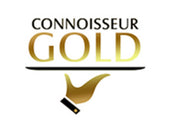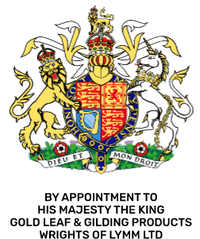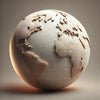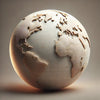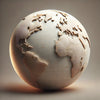Edible Gold Leaf Across the World - Bahrain
- by sam@wrightsoflymm.co.uk User
Bahrain’s Love for Luxurious Edibles
Bahrain, a vibrant island nation in the heart of the Arabian Gulf, is renowned not only for its rich culture and heritage but also for its flair for luxury. Among the symbols of opulence and indulgence is edible gold leaf, a centuries-old tradition that continues to captivate locals and visitors alike. Whether it's 23 carat or 24 carat gold, Bahrainis have a long-standing appreciation for incorporating precious metals into their cuisine, cosmetics, and ceremonies.
A Brief History of Edible Gold Leaf in Bahrain
The use of gold leaf in Bahrain traces back to ancient trading days, where merchants brought exotic goods—including gold and silver—from Persia, India, and beyond. In the region's traditional medicine and elite culinary practices, gold was believed to hold health benefits, including anti-inflammatory and rejuvenating properties.
Gold, known locally by terms such as "ذهب صالح للأكل" (edible gold) or simply "ذهب ورقي" (gold paper), was often reserved for the elite. It was used during royal feasts and celebratory events such as weddings and religious festivals. Bahrain’s merchant class, especially those involved in the pearl trade, would showcase their affluence with delicacies adorned with gold flakes and silver flakes, sometimes dusted lightly with gold dust or silver dust for dramatic effect.
Culinary Uses of Gold Leaf in Bahrain
1. Traditional Sweets and Desserts
Bahrain’s traditional confections, like halwa Bahraini, maamoul, and ghuraiba, are sometimes garnished with 24 carat goldleaf to elevate presentation during Eid and special occasions. The shine of gold adds a luxurious touch to these culturally significant desserts.
2. Modern Fine Dining
Contemporary Bahraini chefs and high-end restaurants in Manama and beyond are embracing edible metals as a hallmark of luxury cuisine. Dishes featuring gold flakes or silver leaf—particularly on cakes, Arabic sweets, and fusion plates—have become Instagram-worthy staples.
Examples include:
-
Gold-topped lamb kebabs
-
Saffron-infused rice with gold dust
-
Date puddings garnished with silver dust
3. Coffee and Beverages
Gold in beverages is another rising trend in Bahrain. Coffee shops now offer gold leaf cappuccinos, while traditional qahwa may be served with floating silver flakes or stirred with gold-infused cardamom for elite gatherings.
Cultural Significance of Gold Leaf in Bahrain
In Bahraini culture, goldleaf is not just about aesthetics—it represents purity, prosperity, and divine blessings. During weddings, it’s common to see sweets coated with 23 carat gold leaf as symbols of abundance and happiness.
In religious contexts, silver leaf is occasionally used during Ashura commemorations in Shia communities, especially in offerings (nazr) prepared for charity and community distribution.
Cosmetic and Wellness Applications
While less publicized, gold dust and silver dust are also found in luxury spa treatments and herbal remedies. Bahrainis have used them in:
-
Facial masks for brightening and anti-aging
-
Oils infused with 23 carat gold for massage therapy
-
Traditional Bahraini perfumes (itr) enhanced with gold flakes
Conclusion: A Living Tradition of Elegance
Bahrain’s use of edible goldleaf, silver leaf, and associated forms like gold flakes or silver dust stands as a shining testament to its deep-rooted appreciation for beauty and extravagance. Whether enhancing a dish, symbolizing prosperity at a wedding, or featured in a luxury spa, these shimmering elements continue to connect Bahrainis to their cultural heritage—while embracing global trends in gourmet and wellness luxury.
Stay golden—literally—next time you visit Bahrain, and experience a taste of opulence, one flake at a time.
- Posted in:
- Edible 23 Carat Gold Leaf
- edible gold
- edible gold leaf
- edible gold specialist
- edible pure gold
- edible silver leaf
- gold leaf
- history of gold leaf
- pure gold
